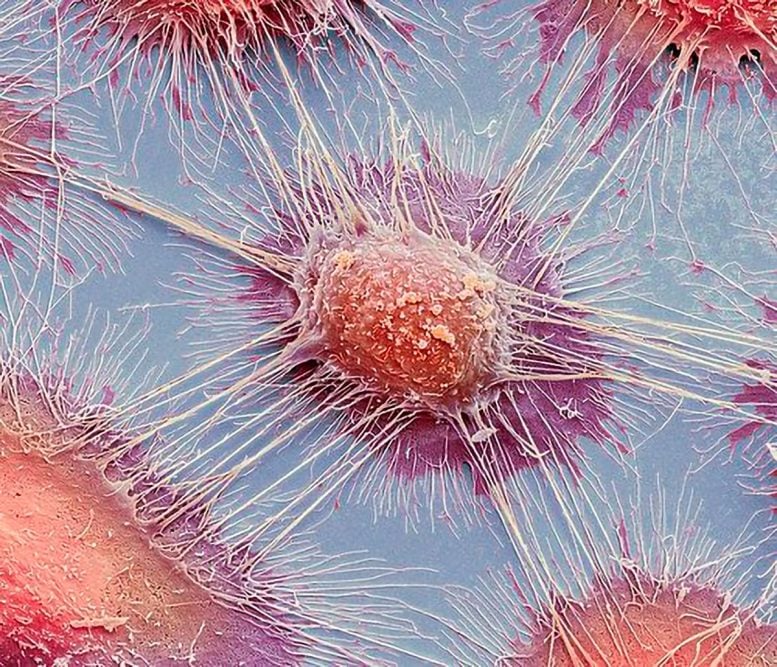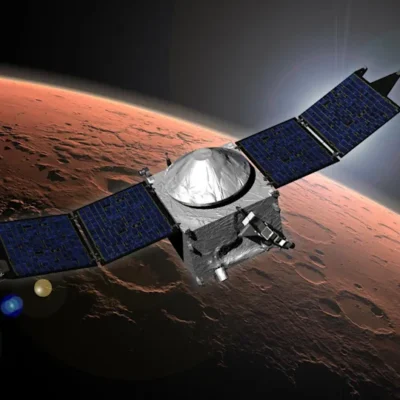Researchers have identified a crucial mechanism by which cancer cells evade the body’s immune system: the transfer of mitochondria between cancer and immune cells.
The immune system plays a vital role in detecting and destroying cancer cells. Cancer immunotherapy enhances this process by training immune cells to recognize and attack tumors. However, many cancers develop strategies to avoid immune detection, leading to treatment resistance. Understanding the molecular basis of this immune evasion is essential for improving therapeutic approaches.
The Role of the Tumor Microenvironment
The tumor microenvironment (TME)—the area surrounding a tumor—significantly influences interactions between cancer cells and immune cells. Cancer cells can manipulate the TME to suppress tumor-infiltrating lymphocytes (TILs), the immune cells responsible for combating tumors. Mitochondria, known as the “powerhouse of the cell,” generate energy for various cellular functions and play a crucial role in the metabolic reprogramming of both cancer cells and TILs. However, the precise mechanisms of mitochondrial dysfunction and its effects on the TME remain poorly understood.
New Insights into Mitochondrial Dysfunction in Cancer
To address this knowledge gap, a team of researchers led by Professor Yosuke Togashi from Okayama University, Japan, has uncovered new insights into mitochondrial dysfunction related to immune evasion in cancer. Collaborating with Tatsuya Nishi and Tomofumi Watanabe from Okayama University, as well as Hideki Ikeda, Katsushige Kawase, and Masahito Kawazu from the Chiba Cancer Center Research Institute, the team identified mitochondrial transfer as a key mechanism of immune evasion. This study was published online in Nature on January 22, 2025.
Professor Togashi stated, “We have identified mitochondrial transfer as a significant mechanism of immune evasion. Our findings enhance the understanding of how tumors resist immune responses, potentially leading to more comprehensive and personalized treatment approaches for various cancers.”
Mitochondria possess their own DNA (mtDNA), which encodes proteins essential for energy production. However, mtDNA is susceptible to damage, and mutations can promote tumor growth and metastasis. In this study, the researchers analyzed TILs from cancer patients and discovered they contained the same mtDNA mutations as the cancer cells. Further analysis indicated that these mutations were associated with abnormal mitochondrial structures and dysfunction in TILs.
Using a fluorescent marker, the researchers tracked the movement of mitochondria between cancer cells and T cells. They found that mitochondria were transferred through direct cell-to-cell connections called tunneling nanotubes, as well as via extracellular vesicles. Once inside T cells, the cancer-derived mitochondria gradually replaced the original T cell mitochondria, resulting in a condition known as ‘homoplasmy,’ where all mtDNA copies in the cell are identical.
How Cancer Cells Protect Transferred Mitochondria
Typically, damaged mitochondria in TILs are eliminated through a process called mitophagy. However, mitochondria transferred from cancer cells appeared to resist this degradation. The researchers found that mitophagy-inhibiting factors were co-transferred with the mitochondria, preventing their breakdown. Consequently, TILs experienced mitochondrial dysfunction, leading to decreased cell division, metabolic changes, increased oxidative stress, and impaired immune responses. In mouse models, these dysfunctional TILs also exhibited resistance to immune checkpoint inhibitors, a form of immunotherapy.
By highlighting mitochondrial transfer as a novel immune evasion mechanism, this study opens new avenues for enhancing cancer treatment. Blocking mitochondrial transfer could improve the response to immunotherapy, particularly for patients with treatment-resistant cancers.
Cancer therapies often come with high costs and significant side effects, especially when they are ineffective. Improving immunotherapy success by inhibiting mitochondrial transfer could alleviate the burden of cancer and enhance patient outcomes.
Professor Togashi concluded, “Current cancer treatments are not universally effective, and there is an urgent need for new therapies that can overcome resistance mechanisms. Developing drugs that inhibit mitochondrial transfer between cancer cells and immune cells may enhance the effectiveness of immunotherapies, thereby providing personalized treatment options for patients with resistant cancers.”
This discovery provides exciting new insights into cancer biology and could pave the way for more effective therapies in the future.
Reference: “Immune evasion through mitochondrial transfer in the tumor microenvironment” by Hideki Ikeda et al., January 22, 2025, Nature. DOI: 10.1038/s41586-024-08439-0
Funding: Grants-in-Aid for Scientific Research and various other funding sources from the Japan Society for the Promotion of Science and other organizations.





